At a glance
Parish Office: 5 Monash Ave [PO Box 61], Malanda QLD 4885; ph (07) 4046 5235.
Churches: St James in Malanda (Google map), Our Lady of Consolation & St Patrick in Yungaburra (Google map), and St Rita of Cascia in Millaa Millaa (Google map).
For Mass times, go to liturgy calendar.
PDF of latest Sunday bulletin.
For sacramental records, contact the Atherton Parish Office, 28 Mabel Street [PO Box 121], Atherton QLD 4883: ph (07) 4046 5200.
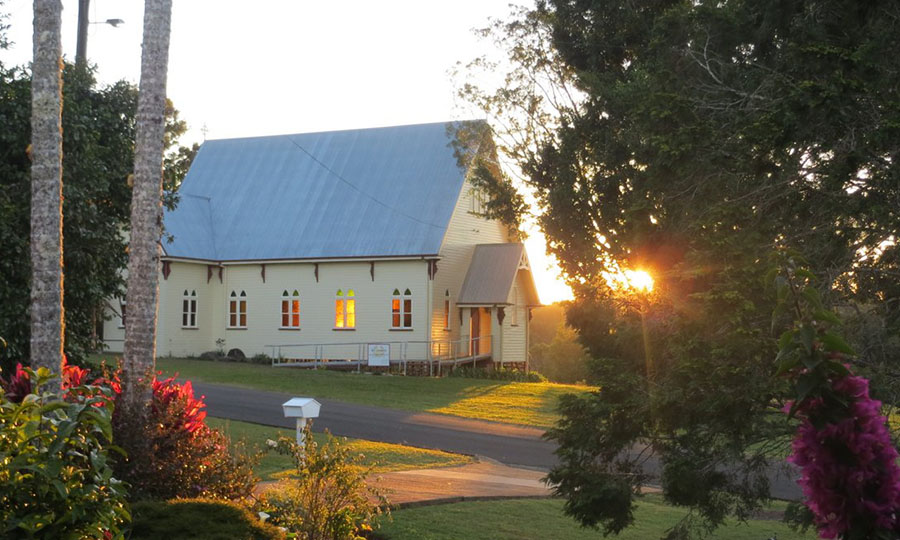
Photo by Gunnar Risla, neighbour across the road, nearing sunset in 2014.
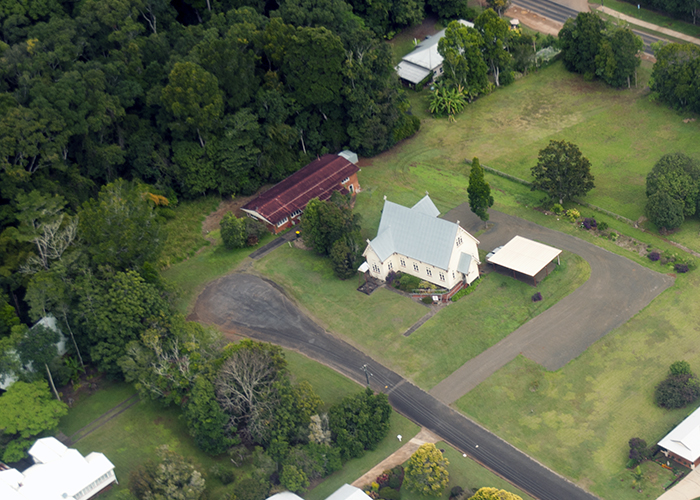
Arial photo taken in August 2020.
The church (1927)
The decision to build a church was made in mid-1925 on land donated by James English (1865-1951), now 5-11 Monash Avenue (see in a map). It was designed by architect Robert Ransom Hassall (1882-1957) and was built by Albert Alfred Halfpapp (1890-1971), both then of Malanda. Building commenced July 1926, and reports indicate that at least the shell was completed by November 1926. It was blessed and opened by Bishop John Heavey on 23 January 1927, but some furnishings were still to come.
The altar and retable (1928)
The neo-Gothic timber altar was made by Stephen Purcell (1899-1976) in Mareeba as a copy of the altar there (see the photo by Harriett Brims in the Qld State Archives). Our altar was reported in November 1928 as having just been completed and sent to Malanda, and was photographed at this time fully assembled and painted white on a pallet outside Steve’s workshop (see photos below). The retable (sometimes called reredos, the panels with 3 arch spaces at the back of the altar) and turret above the tabernacle would have been detached before transport and then reassembled in the church. We do not know when it arrived in Malanda, nor when, where and by whom it was painted as imitation marble and stone according to the usual style of the time. The next photo (see below) was taken when Fr Kevin English MSC (1914-1998), first priest vocation from the parish, celebrated Mass here on 10 August 1941; it shows the altar’s original painted form imitating marble, and it was like this until it was repainted into its current white with gold trim in 1969. It was touched up somewhat around 1993 but the job was left finished. The arches in the reredos have a peculiar space that allows art on custom-made frames to be inserted.
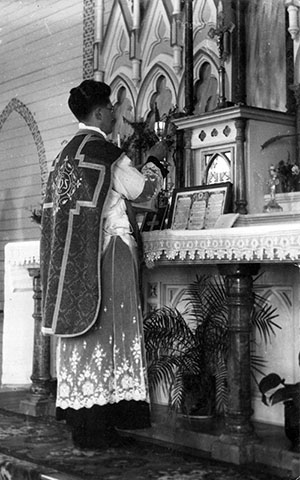
10 August 1941, Fr Kevin English celebrating Mass.
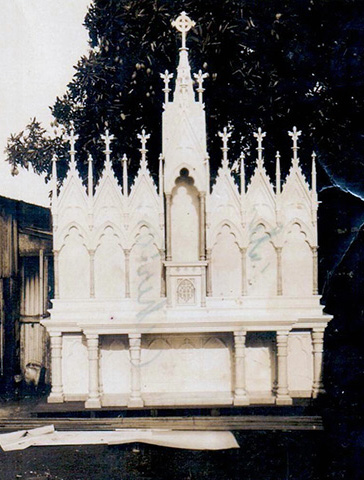
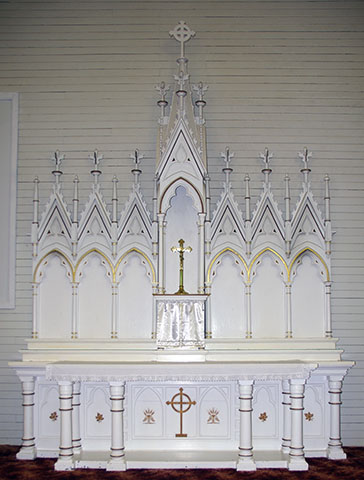
Left: in 1928 in Mareeba painted with white base coat. Right: in 2016.
The original painted marbling and stone decoration of the altar was painted out, probably in the late 1960s, and to become the current white with gold trim. It was retouched in the 1990s but was left unfinished. Before the church's centenary (2027) we plan to have it properly repainted. The altar, as was common with those made in the same period, was built with the capacity to hold art within the six arches of the retable. Custom designed and made frames allow art to be inserted without the need for any fixtures, and thus without making any change to the piece nor inflicting any damage to it. This also allows us to have a more dynamic approach to the inclusion of art than would usually be possible; we hope for one set to create a form of Iconostasis, and during certain liturgical season, such as Lent, to use colours or art proper to that time.
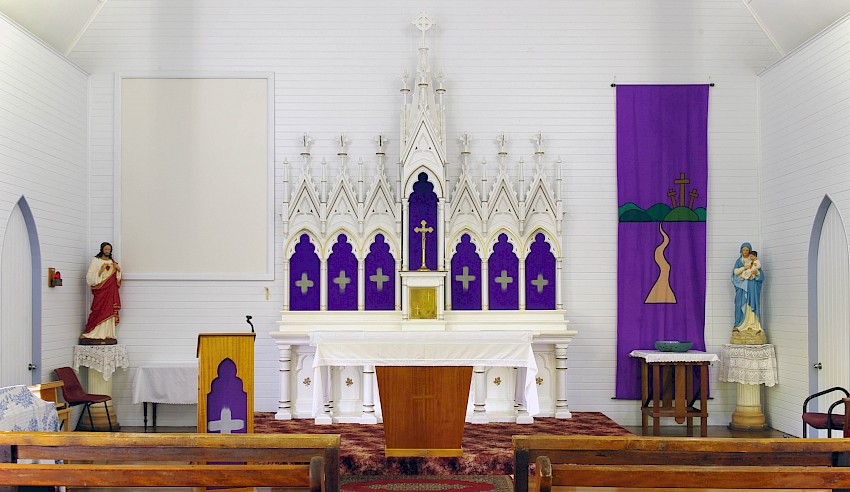 Lent 2020, the temporary purple inserts showing where custom art pieces may go. Click for a larger version.
Lent 2020, the temporary purple inserts showing where custom art pieces may go. Click for a larger version.
2020
Achieving fullest use of the church within the Covid-19 number and spacing restrictions was possible only with the temporary removal of pews in favour of individual chairs. This gave us the opportunity to have the pews restored and the floor re-polished.
2024-2025
After a long search, we are now working with an iconography team from the Christian Art Studio, Ealing Abbey (London) to prepare an iconographic altarpiece. Due to heritage restrictions this cannot be done in the usual way, with painted icons on boards permanently fixed behind the neo-gothic frame. Rather, the art pieces must be prepared on canvas and be mounted on specially designed folding frames that allow the piece to be inserted into the spaces and held there only by gravity, without fixtures of any kind to damage the historic altar. In this way the historic altar will be enhanced, demonstrating also the original function of Gothic style altars.